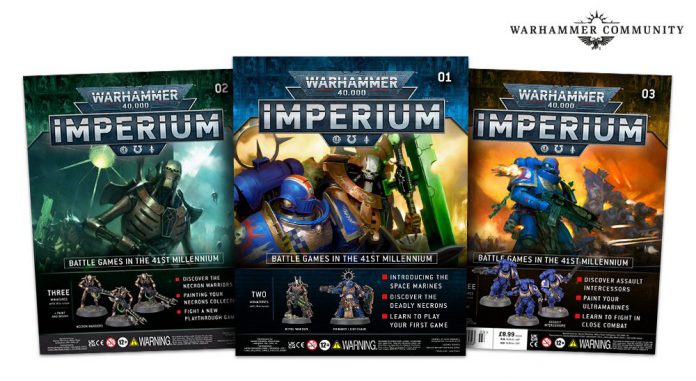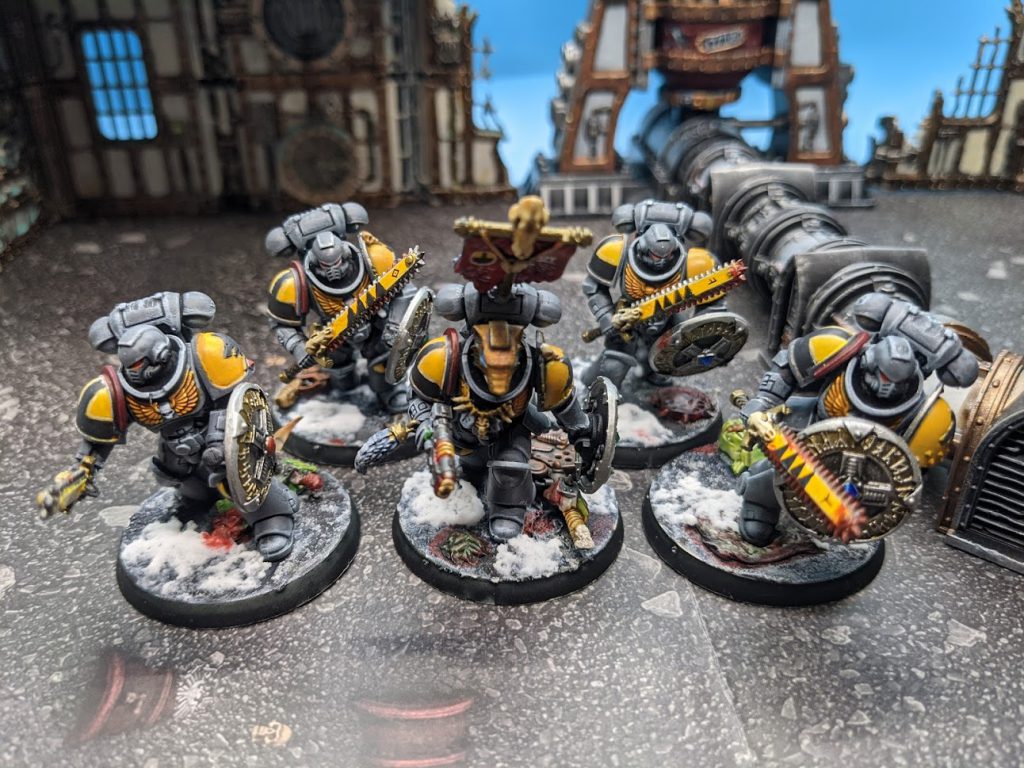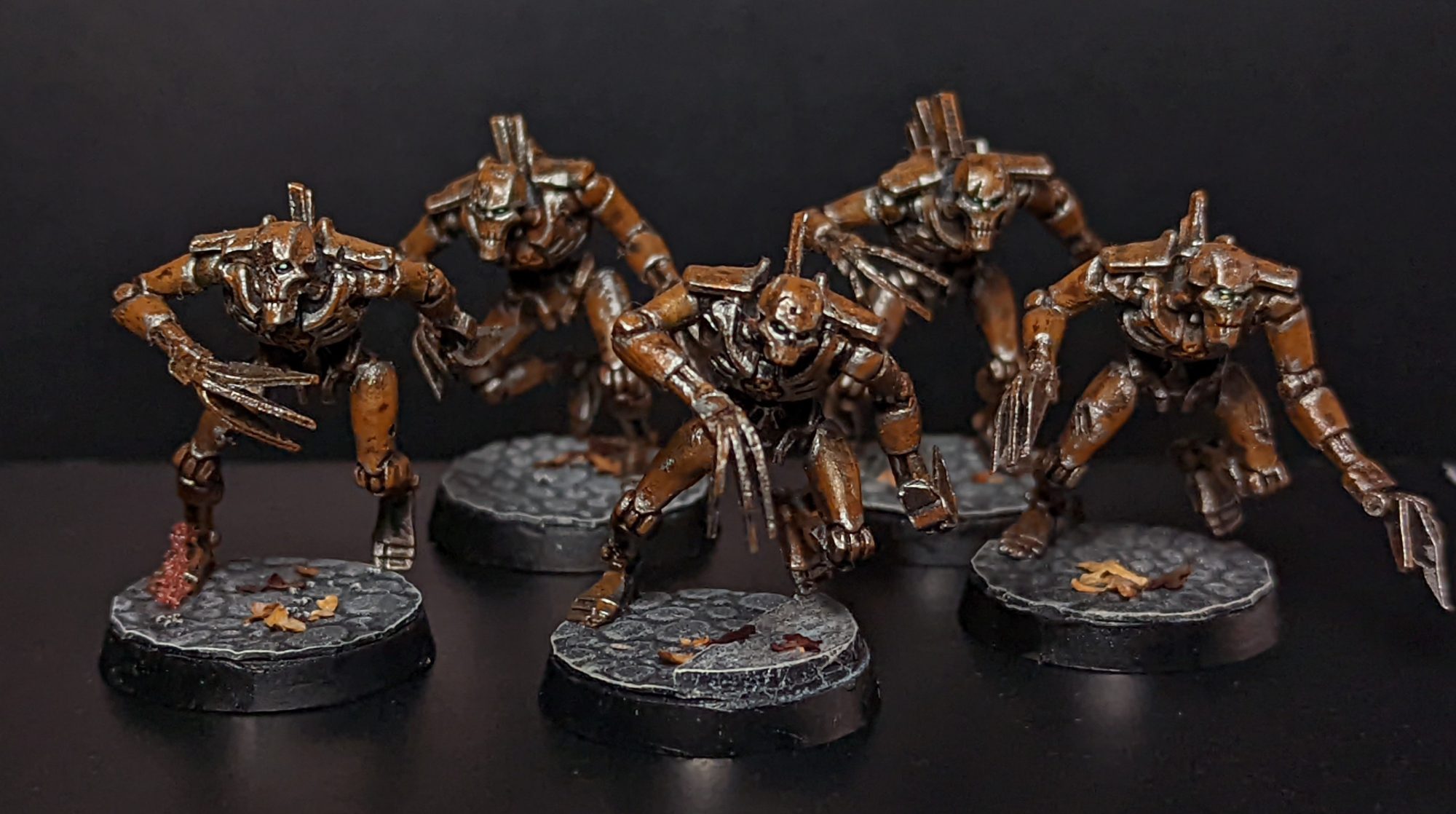Imperium is a weekly hobby magazine from Hachette Partworks. In this 80-week series, our intrepid magazine-receiver will be reviewing each individual issue, its included models, and gaming materials. A Premium subscription was provided to Goonhammer for review purposes.
The issues of Imperium which contain paint are always a challenge to review. It is easy to get excited for a shiny new model kit that can be added to one’s force, while tossing another pot of Buttchug Brown or Guilliman’s Gymsock Blue onto the pile isn’t necessarily as exhilarating. There’s something prescriptive about it as well, and were I a young hobbyist I may chafe at the suggestion that I use the exact paints provided, or I would become impatient that 40 issues in I still don’t have a green paint. I understand this is part of the format of partworks magazines, however, so forward I will press on.
The Magazine
Our first page concerns Adeptus Mechanicus forces and a new system called Defeat and Redemption. Think of this is as a non-Crusade narrative mechanic where you can roll up a hyper-specific injury based on what unit destroyed your character, and then a separate task they can accomplish to overcome this shame. Naturally, this involves multiple tables to roll on, so here we go:
Enginseer Sy-Gex/323Mk12 had excised much of his flesh during his time communing with the Omnissiah, but even he could feel the sting of defeat. His servo-arm was dead weight at his back, its cabled severed by the volley of a Necron Royal Warden’s gauss weapon. That Sy-Gex had survived at all was a minor miracle; few on Derek’s Mom’s Dining Table IV were so lucky. Still lying face down in the mud, he ran thousands of cogitations against his own brain chemistry. He had successfully output a task that would redeem himself in his own augmetic eyes, as well as those of the Omnissiah. Should he identify one of the so-called “nobles” of this so-called “Necron Society” and brave their fire to fight them in melee, his shame would be erased.
As a companion to this, we have a far more optimistic Missions and Motivations mechanic for Ultramarines. In this you can define each character’s command style (usually a rough split between individual abilities and supporting abilities) and then roll up a simple objective for them that supports that. These are all on the gamey side and not as narrative as the Adeptus Mechanicus system so I won’t be writing some Goonhammer-Sanctioned Fanfiction about them, but they’re still pretty fun. They overlap with what you would likely want to do with the unit anyway – granting Rites of Battle to multiple units for the Captain, Smiting 10 enemies with the Librarian, passing saves with your Lieutenant, and so on. It’s a fun little system with no stakes or outcome on the gameplay, but a clever player could probably use it as a tiebreaker mechanic or award an extra victory point if your commander accomplishes their objective. I think once equivalents arrive for the Necrons, it could be a fun way to introduce a secondary objective into your games.

Our narrative section is certainly not complete yet, as we next get a page about the Space Wolves accompanied by some sick art of an Inceptor landing on a dude’s face. I may or may not have pumped my fist a single time in triumph on seeing this art. We get a brief overview of the chapter, spelling out their barbaric background and the curse of the Wulfen. Meatier than this is the next section on the Age of the Imperium, detailing the rise of the Imperial Creed and the loss of reason across mankind. There’s some foundational stuff here, like the Age of Apostasy wherein the Brides of the Emperor became the Sisters of Battle after Goge Vandire’s treachery. Following this is another piece on the Age of Redemption and the Macharian Crusade, then the harsher Imperium that was left behind. This is all stuff I remember from my own youth poring over the 3rd edition rulebook, and it is much of what makes up the 40k universe as we know it today.
Lastly, a little Necron lore is sprinkled in for flavor. We learn this week of the Mephrit Dynasty, the planetary executioners of the Silent Kings. These Necrons aren’t just murderous, their downright genocidal, gladly Death Starring entire planets at a time. Fortunately, and I can’t believe I’m siding with elves here, their phaeron was killed by Aeldari assassins and the dynasty just ain’t what it used to be. They may find a new leader in Zarathusa the Ineffable, which is in the running for best Warhammer name of 2022. Two more dynasties are detailed in less depth, the Nihilakh Dynasty and Nephrekh Dynasty. Neither gets much flavor and just read as Necrons.txt in so many ways, but the Nephrekh phaeron, Sylphek, has a technicolor dreamcoat he uses to teleport around and that’s fun. I love that these aeons-old murderous mummy robots are just a bunch of eccentric weirdos.
The Hobby Materials
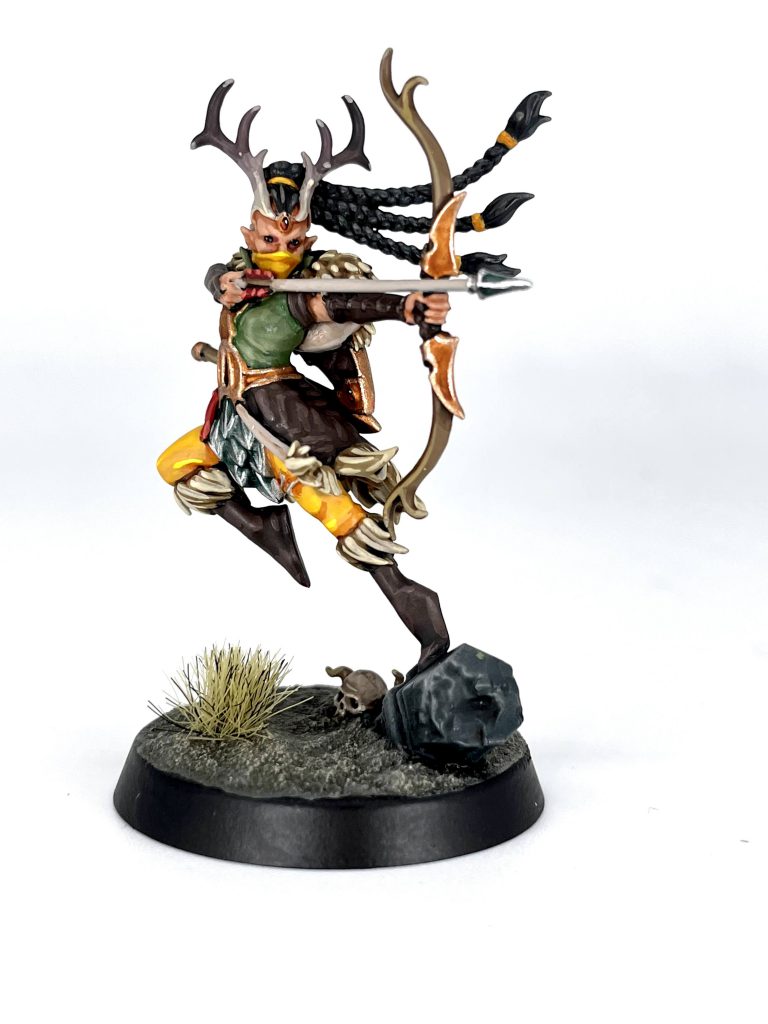
In a rare move, I am including a non-40k model for the header image here. This is because on this particular Cursed City hero, I used both of the included paints in this issue, so I can share my experiences with them firsthand. Astrogranite is generally seen as more of an urban rubble or ash wastes basing paint. Because it is a medium grey in line with Mechanicus Standard Grey, a wash can go a long way towards defining a different environment. In the above case I used Athonian Camoshade for a dead earth look, while the slim paint guide in this week’s issue of Imperium uses Nuln Oil instead. A drybrush will finish the job, but this issue doesn’t go into further detail on that front. I would recommend Dawnstone or Karak Stone depending on what wash you use. However, the star of the show this week is the Texture Spreader tool. It feels a bit flimsy, as a soft and rubbery piece of plastic with an obvious seam running down the side – but by gum does it spread texture paints well. Ever since I started using texture paints, I have used either old brushes or metal sculpting tools to spread them, but these presented challenges. Both were rigid, and couldn’t generally hold that much texture paint at a time. This tool is instead flexible enough to work around a model’s feet or the bottom of a pot of texture paint, while having broad enough heads on either side of the tool to effectively spread texture with a good amount of control. I have already begun using it in my own projects, and I will be using it every time I slap some texture paint on a future model’s base. As for Yriel Yellow, it is, unfortunately, a yellow paint. Yellow pigment is especially large, and as a result its coverage is generally pretty poor compared to other hues like blue. It is, however, important to have some saturated primary colors to work from, and this certainly fits the bill. In the case of the model above, I mixed Yriel Yellow gradually with Averland Sunset to get some highlights without losing saturation the way mixing in white would. As far as yellows go, it’s fine.
The Gaming Materials
Whilst not as 5-dimensional-chess-like as the Adeptus Mechanicus Doctrina Imperatives we got back in issue 35, the Necron Command Protocols do introduce a whole new level of complexity to the Necron playstyle. Basically, each turn the Necron player gets access to two special rules that affect their whole army, so long as they are within 6″ of a character. Each Command Protocol can only be used once, and there are 6 to choose from. These range from extra movement to shooting buffs and more besides. The order of these Protocols needs to be written out before the game, like one is programming a machine. A canny player will be able to form a strategy around these abilities and build their list around their order, but I’m just here for the vibes, man. Beyond this, the Charge and Fight phases are codified to match the main rules, and we get to move on to our scenario.
This week we are Running the Gauntlet. Necrons have prepared an ambush, and the Ultramarines have to break through and reinforce their Adeptus Mechanicus allies. Using a longways deployment, the Space Marine force of the Captain, Lieutenant, 5 Assault Intercessors, and 3 Aggressors need to escape the clutches of the Necrons, here represented by the Overlord, 10 Warriors, 5 Immortals, and 5 Flayed Ones. If a single Space Marine unit escapes, they win, otherwise it’s a Necron victory. It’s not necessarily easy to get multiple units off the board, even crossing a 30″ expanse, but I really appreciate the asymmetrical mission and deployment style. Many missions in Imperium are understandably Babby’s First Matched Play Scenario, so I’m happy to see something more narrative and less concerned with perfect balance.
Final Verdict 38/80:
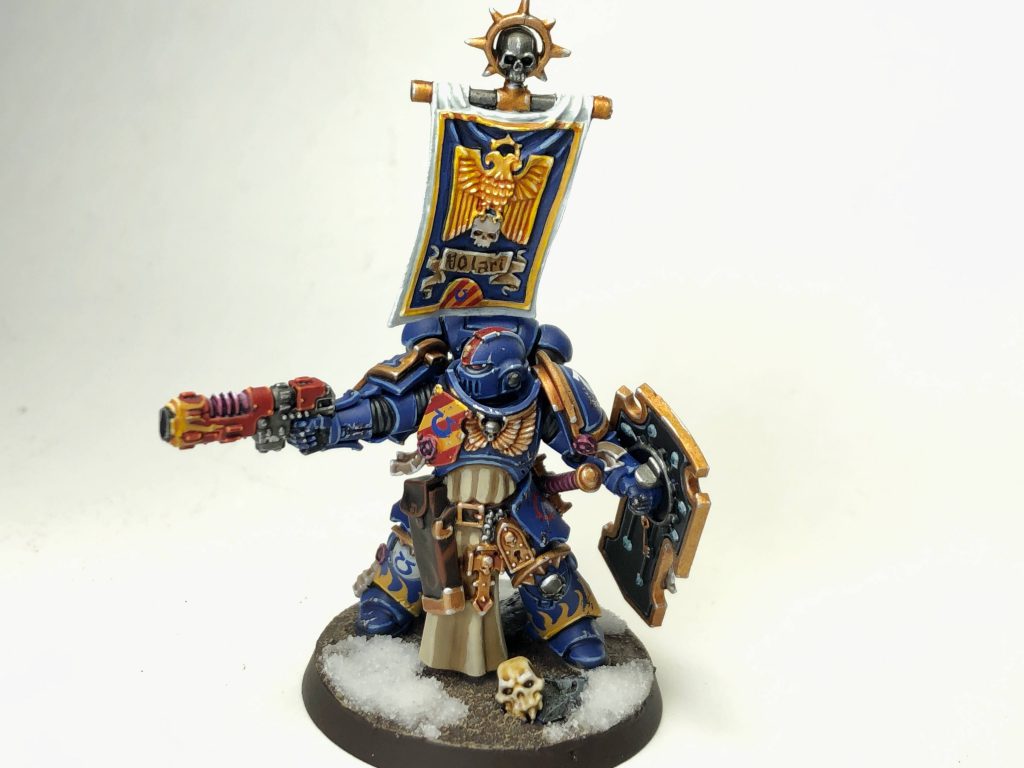
The combined value of a pot of Astrogranite, a pot of Yriel Yellow, and a Medium Texture Spreader tool is $21.15. At the Imperium cover price of $13.95, that’s a hearty savings. These paints are generally useful, and the Texture Spreader is one of those tools you don’t know you need until you use it. This week’s scenario is a fun one, and the narrative material provided for your Adeptus Mechanicus and Space Marine forces is fun and flavorful. Any issue that includes something I never knew I needed is one worth recommending, so I’ll be giving top marks to this one.
See you next issue, warhams.
Have any questions or feedback? Drop us a note in the comments below or email us at contact@goonhammer.com.
